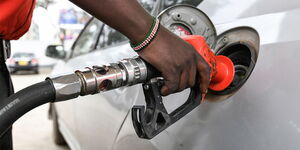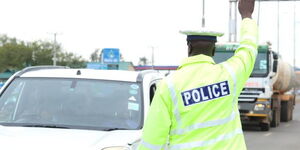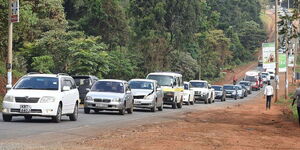The Nairobi Expressway has proved to be a thorn in the flesh for many motorists and residents using Mombasa Road after they woke up to heavy flooding.
The overnight rain which fell in many parts of the city would have gone unreported if not for the impact on Mombasa Road.
The construction of the Nairobi Expressway aggravated an average rainfall into floods due to the disruption of the waterways and drainage systems along the road.
{"preview_thumbnail":"/files/styles/video_embed_wysiwyg_preview/public/video_thumbnails/GHRKDjgkcW4.jpg?itok=L0Ha_8_f","video_url":"","settings":{"responsive":1,"width":"854","height":"480","autoplay":0},"settings_summary":["Embedded Video (Responsive)."]}
The most affected sections included the area around the Bellevue/South B Junction and Imara Daima/City Cabanas.
Photos shared by road users showed that the floodwaters submerged nearly half of the smaller vehicles.
Drivers were stuck on both sections of the road for hours as they waited for the water to be drained.
The heavy flooding covered up road barriers, creating a hazard for motorists who would have driven into the trenches and pits dug by the Nairobi Expressway workers.
“Those using Mombasa Road towards Cabanas, come with a boat. There is a sea of water at Imara Daima Junction,” one motorist warned.
“The stress caused by the building of the new expressway is outright torture to the Mombasa road users. We should be compensated by using the expressway for free for one year after completion,” another argued on social media.
Construction of the Ksh60 billion new road has led to major inconveniences in the past months following the launch of construction in early 2020.
Other than heavy traffic, the residents have complained of severe water shortage.
The relocation of electricity poles has also caused frequent power outages for estates along the road.
A number of accidents have also been reported owing to random road restrictions and sharp turns created by construction barriers.












